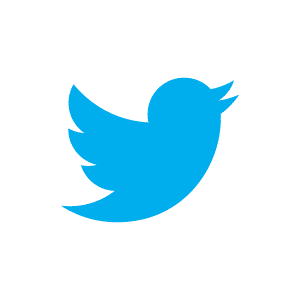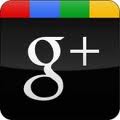Pinterest is the popular new kid in town when it comes to social media. It’s referring a huge amount of traffic to other websites, quickly becoming one of the most popular social media sites and sites to send traffic on to other sites—like, maybe, yours. Since I also write a craft blog, my co-bloggers/sisters and I have been members of Pinterest since spring/summer 2011 (yes, friends, 18 months! An eternity in Internet-dom!). You can see my Pinterest profile here.
What’s Pinterest?
 Pinterest is a visual “pin board” of whatever you love, they claim. You can “pin” an image from almost any site, which is like saving it to a public, digital scrapbook (although Pinterest did finally add private boards recently). You can have several boards arranged by topic/genre (many people have dozens). Also, you can create shared boards, where multiple users (your friends, critique group, whomever) can add pins.
Pinterest is a visual “pin board” of whatever you love, they claim. You can “pin” an image from almost any site, which is like saving it to a public, digital scrapbook (although Pinterest did finally add private boards recently). You can have several boards arranged by topic/genre (many people have dozens). Also, you can create shared boards, where multiple users (your friends, critique group, whomever) can add pins.
You don’t have to discover everything you add to your scrapbook yourself. You can also browse the feeds of friends that you follow (found via Facebook or Twitter—just click on the Pinterest logo at the top of the site) or all Pinterest members (click on the Pinterest logo, then select “Everything”) or by category.

Feel free to “repin” anything that catches your eye. You can also “like” pins and share comments on them. Hover your mouse over any pin, and the buttons for all these options show up.

You can also follow other Pinterest members whose pins you like—or even just a single board of another member, if that’s all that interests you.
Pinterest is a natural fit for anyone who interested in visuals—anything from crafts to cooking to fashion to interior design. But can it work for authors?
How to use Pinterest as an author
Pinterest is interesting among social media sites in that the emphasis is less on the networking and more on the content. Naturally, having more followers can lead to more repins, more views and more clicks, but for me, anyway, I care less about who pinned something as long as it’s awesome.
Use Pinterest like a person
Using Pinterest to try to market your book constantly and exclusively, as with all other social media sites, is a sure way to turn people off.
Instead of focusing on what you’re going to get out of it as someone with a book to sell or a blog to attract visitors, use Pinterest like it was intended. Maybe you’re a knitter or a baker or into home design. Maybe you like inspirational photos or infographics. If there’s something out there with pictures that you like, you can use Pinterest—and guess what? Even writing has pictures.
While the focus on Pinterest is on the content itself, that doesn’t mean you should focus only on pinning your own things. Connect with your friends—make new ones—through following, repinning and commenting.
Well, what do I pin?
We’ve talked before about using Pinterest as an “inspiration” board for a novel. As a reader, I love to see authors’ inspiration images, whether for character, settings or just milieu.
In addition to any other visual interests you might have (yes, PLEASE pin things other than books!), book-related pins are a great fit for an author’s Pinterest account. A few ideas:
- Books you’ve read and loved—Books Worth Reading is one of the default boards on Pinterest
- Your to-be-read pile (I have a TBR board here)
- Informational articles on writing, publishing or marketing (Got it!)
- Motivational articles, pictures or quotes
- Inspirational pictures—settings, characters, events, even clothing your characters wear or just the general feeling of your novel (Yep, done that, too)

Beautiful writing spaces, gorgeous home libraries and all more are all great writing-related pins.
How & where to put your books on Pinterest
Although there’s some disagreement on this, I’m of the opinion that you can pin your own books, with the following caveats:
- Be upfront that this is your book. Don’t pretend like it’s just this book you loved.
- Consider putting all the books you’ve written onto one pin board. You keep them together and get to put the “I wrote this” disclaimer at the top of the page.
- Don’t let your account be all and only your books. As above, use Pinterest as a real user would.
- I recommend pinning the page for the book on your website—as long as your purchase links are easy to find—or perhaps the Amazon listing.
On the other hand, pinning every helpful article you’ve written on your own site is much less okay.
A few good examples
One of my writing friends who does this all well is Chantele Sedgwick. She has a pin board for books she’s written (one currently out), as well as inspiration boards for several of her books/WIPs, and a general writing inspiration board with interesting images, infographics, quotations on writing and more.
Another friend who does this well is Canda Mortensen. She has book related boards that include “In My Library” and “Plot & Book Ideas” (though honestly, I’m most glad I follow her because of her food pins!).
Finally, I love Cathy Witbeck’s organization. Her writing-related boards include:
Note that all of these ladies also have many other boards dedicated to food, crafts, humor, organization and more. Also note that my examples are ladies—the Pinterest audience skews heavily female.
Incorporating Pinterest to your website or blog
If you have social media buttons on your site, be sure to add one for Pinterest. I recently did this up at the top of my blog.
You can also add a “Pin this” button to the individual articles. Personally, I think it’s more useful to put this only on post pages rather than the homepage—I hate clicking through on a pin of a pretty sweater, delicious recipe or other inspiration only to be taken to the blog’s main page to search through the archives to try to find it myself. If you pin from an article (instead of the main blog page), it links back directly to the article, making it easier for you and others to find the material again.
If you have a blog or informational articles on your website, I hope you’re already using pictures in your articles. However, using graphics designed to let people know what your article is about in an engaging way. This can be a cool picture, but should definitely involve engaging text. There’s a big difference between a picture of a dog with “Learn how to make really effective first chapters and introduce all your characters” vs. a picture of a baited hook with “Hook your readers fast!” Jami Gold does this well on her blog, including related, engaging graphics on each article with her web address.
Advanced Pinterest tips and tricks
Want to know what other people are pinning from your site? Check out http://pinterest.com/source/yourURLwithNOwww.com/ (replace “yourURLwithNOwww” with your URL without the www. part). Here’s what it shows for my craft blog:

Repins, likes and comments all help the visibility of a pin, whether that’s something you’ve pinned or a pin from your site. Personally, I think it’s okay to comment on or repin when someone else has pinned something from your site, especially when that person has just put your content in front of a lot of followers.
Rather than following all of a friend’s pins, you can choose to follow only the boards you’re most interested in. Conversely, you can follow a friend, but unfollow any of their individual boards—not interested in interior design or organizational tips, and your friend’s on a pinning spree? Go to their profile page, click on the Boards view and click on the “Unfollow” button below their organization board. (You can also Unfollow All at the top of the page.)

You can customize your own profile page by dragging and dropping your boards into an arrangement you like and setting a picture as the “cover” for each of your boards. You can also customize individual boards by categorizing them (which is usually required when creating a new board these days) and entering a description, which is visible on the board page.

You can “embed” a pin on your blog—click on the pin and look to the right. There’s an Embed <> button.

Set the size of the image and copy the code into the HTML tab of your blog post—voila:
You can pin from almost any website easily by adding the Pinterest bookmarklet to your browser’s bookmark bar. Just follow the directions on the Pinterest goodies page. Then just click that bookmark and it gives you a choice of all the “pinnable” pictures on the page (you’ll enter the description in a popup after selecting a picture). The Pinterest goodies page also features Pinterest buttons for your website.
Is Pinterest worth it?
As with most online marketing, it’s going to be pretty tough to definitively tie a sale to any one activity. Pinterest can help you get your books in front of more eyes—but as with all social media, if that’s all you’re looking for, you’re kind of missing the point.
The biggest drawback to Pinterest? If you thought Facebook and Twitter were time drains, look out!
More resources
A few how-tos I enjoyed while researching Pinterest for authors, from:
What do you think? What authors do you see on Pinterest? How do you use Pinterest? Come join the conversation!
Push pin photo by Emilian Robert Vicol





 Pinterest is a visual “pin board” of whatever you love, they claim. You can “pin” an image from almost any site, which is like saving it to a public, digital scrapbook (although Pinterest did finally add private boards recently). You can have several boards arranged by topic/genre (many people have dozens). Also, you can create shared boards, where multiple users (your friends, critique group, whomever) can add pins.
Pinterest is a visual “pin board” of whatever you love, they claim. You can “pin” an image from almost any site, which is like saving it to a public, digital scrapbook (although Pinterest did finally add private boards recently). You can have several boards arranged by topic/genre (many people have dozens). Also, you can create shared boards, where multiple users (your friends, critique group, whomever) can add pins.












 But really, once someone gives you permission to contact them, they are that much closer to a real connection with you. Marketing isn’t just about shouting down from the rooftops. Unless it’s about building a connection, connecting with people who already like you, and helping new people to like you—all very personal, social things—your marketing will probably talk right over your subscribers’ heads.
But really, once someone gives you permission to contact them, they are that much closer to a real connection with you. Marketing isn’t just about shouting down from the rooftops. Unless it’s about building a connection, connecting with people who already like you, and helping new people to like you—all very personal, social things—your marketing will probably talk right over your subscribers’ heads.
 Although I’ve been on Twitter for four or five years (I used to work in Internet marketing, and Twitter was shiny and new back then, so I had to do it!), I don’t really feel like enough of an expert to offer an intro to Twitter. I’ve also always been the type who wants to figure things out for herself. However, if you need a basic introduction to Twitter shorthand and etiquette,
Although I’ve been on Twitter for four or five years (I used to work in Internet marketing, and Twitter was shiny and new back then, so I had to do it!), I don’t really feel like enough of an expert to offer an intro to Twitter. I’ve also always been the type who wants to figure things out for herself. However, if you need a basic introduction to Twitter shorthand and etiquette, 

 Author Elana Johnson blogged earlier this year that Goodreads had added the ability to
Author Elana Johnson blogged earlier this year that Goodreads had added the ability to 

